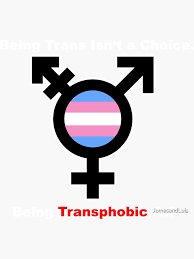The journey of transition is a deeply personal and transformative experience for many trans women. As they navigate this process, one common concern is the impact of hormone therapy, particularly estrogen, on muscle mass. Understanding how estrogen interacts with the body, especially in the context of muscle maintenance, can help ease concerns and promote better health outcomes. In this article, we’ll explore the relationship between estrogen and muscle loss in trans women, providing insights, debunking myths, and offering practical advice for maintaining muscle health during the transition.
Understanding Estrogen and Its Role in the Body
Estrogen is a vital hormone predominantly associated with female reproductive health, but its role extends far beyond that. In both cisgender and transgender women, estrogen plays a crucial part in regulating various bodily functions, including the menstrual cycle, bone density, and fat distribution. For trans women undergoing hormone replacement therapy (HRT), estrogen facilitates the development of secondary sexual characteristics, leading to increased breast tissue and a more feminine body shape. Sissy HumiliationSissy Boy FeminizationIs It Okay To Be Transgender
However, estrogen also affects muscle tissue. It interacts with muscle fibers, influencing their growth and repair. This hormone is known to promote the storage of fat over muscle, which is part of the body’s natural shift during a female development phase. As trans women begin their journey with estrogen, understanding this duality is crucial for managing expectations regarding muscle maintenance and overall body composition.
What Happens to Muscle Mass During Transition?
When trans women start hormone therapy, many report changes in their muscle mass and body composition. Initially, testosterone levels decrease, leading to a natural decline in muscle strength and mass because the body is transitioning from a muscle-building state to one that is more aligned with female physiology. This change can be concerning for those who prioritize strength training or athletic performance.
Over time, while estrogen promotes fat redistribution and can lead to softer body contours, this doesn’t mean that muscle mass will vanish entirely. The extent to which muscle mass changes can vary based on factors such as age, genetics, and how individuals choose to engage in physical activity during their transition.
The Science Behind Estrogen and Muscle Health
Research indicates that estrogen plays a significant role in muscle metabolism. It not only helps in the differentiation of muscle fibers but also aids in muscle recovery and repair after exercise. However, the introduction of estrogen therapy might lead to a decrease in muscle protein synthesis traditionally stimulated by testosterone.
It’s essential to note that while estrogen doesn’t actively cause muscle loss, it does shift how the body prioritizes muscle growth compared to fat storage. Therefore, understanding these dynamics can help trans women manage their fitness goals more effectively while embracing the changes that come with HRT.
Debunking Myths: Estrogen and Muscle Loss Explained
A common myth surrounding estrogen therapy is that it will inevitably lead to significant muscle loss in trans women. While there may be an initial drop in muscle mass due to decreased testosterone levels, many individuals can successfully maintain or even build muscle with appropriate training and nutrition.
This misconception often arises from generalized beliefs about estrogen’s effects, especially in the context of bodybuilders or athletes who may experience more drastic changes. It’s crucial to differentiate between the experiences of cisgender women and trans women on estrogen therapy, as factors like training intensity and dietary habits play pivotal roles in muscle preservation.
Factors Influencing Muscle Loss in Trans Women
Several factors can contribute to muscle loss in trans women beyond hormone therapy. Age is a significant determinant, as muscle mass naturally declines with age in all individuals. Additionally, lifestyle factors such as physical activity levels, nutrient intake, and overall health play a crucial role.
Stress and mental health can also impact physical well-being. Many trans women face unique challenges, including societal pressures and discrimination, which can affect motivation for exercise and self-care. A holistic approach that considers these factors is essential for understanding and addressing muscle loss during the transition.
Strategies to Maintain Muscle While on Estrogen
To counteract the potential effects of estrogen on muscle mass, trans women can adopt specific strategies aimed at preserving and even building muscle. Resistance training is vital; incorporating weightlifting or bodyweight exercises into a regular workout routine can help stimulate muscle growth.
Moreover, tailoring fitness goals to include progressive overload—gradually increasing weights or resistance—can challenge the muscles effectively. This approach encourages muscle adaptation and maintenance, helping trans women feel strong and empowered throughout their transition.
Nutrition Tips for Trans Women in Transition
Nutrition is a crucial component of maintaining muscle mass during hormone therapy. Ensuring adequate protein intake is essential for muscle repair and growth. Trans women should aim for a balanced diet rich in lean proteins, healthy fats, and various fruits and vegetables to support overall health and fitness goals.
Hydration also plays a critical role in muscle function and recovery. Drinking enough water and including hydrating foods can help keep muscles functioning optimally. Meal planning and preparation can further assist in maintaining a balanced diet, making it easier for trans women to adhere to their nutritional needs during their transition.
Real Experiences: Trans Women Share Their Stories
Hearing from individuals who have navigated the journey of transition can be incredibly valuable. Many trans women share that while they initially experienced concerns about muscle loss, they soon discovered that with the right approach to training and nutrition, they could maintain their strength and physique.
Stories of resilience and adaptation highlight the importance of listening to one’s body and setting realistic fitness goals. These experiences often inspire others, showcasing that transitioning doesn’t mean losing strength; rather, it’s about redefining what strength means and embracing new challenges along the way.
In conclusion, the relationship between estrogen and muscle loss in trans women is complex but manageable. While hormonal changes can influence muscle mass, proactive strategies in training and nutrition can help maintain strength and promote overall well-being. It’s essential to approach these changes with an open mind and a commitment to self-care, allowing trans women to thrive during their transition. With the right information and support, transitioning can be a time of empowerment, growth, and acceptance of one’s body and identity.


